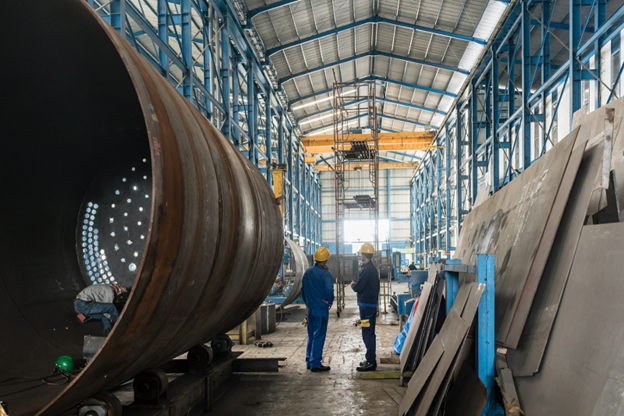Industrial Odor Control: What You Need to Know
Industrial Odor Control: What You Need to Know
Industrial odors are not for the faint of heart. Anyone who has visited a wastewater treatment plant or a manufacturing plant knows how bad these odors can become—bad enough that local communities can file nuisance complaints against your facility. But the work still needs to be done, so how do you control these odors for the well-being of your facility and neighboring communities?
At State Chemical, we manufacture and distribute chemical solutions for various problems, including industrial odors. It’s easy to smell these odors and think they’re unsolvable, but there are solutions for you.
To help you find the best method of odor control for your industrial facility, we’re going to explain where industrial odors commonly come from, potential methods of treatment, and the impact odor elimination can have on your facility as a whole. After reading, you’ll know how industrial odor control could work for you.
What are Industrial Odors?
When we say “industrial odors,” it can sometimes be difficult to know what exactly we’re referring to. For some, “industrial odors” may be specific to certain businesses. For others, “industrial odors” may include any non-household odors. When State Chemical says “industrial odors,” we mean severe odors in industrial facilities (not institutional facilities, which may include businesses with mild odors).
Often, this includes businesses such as wastewater treatment plants, manufacturers, food processing plants, landfills, and other facilities with extreme malodors. Many times, industrial facilities will be outdoor facilities, but this is not always the case.
When you have an industrial facility creating odors, it can have a negative impact on employees and local residents. Being constantly overwhelmed with foul smells takes a toll, and it can lead to employee dissatisfaction and nuisance complaints (leading to eventual fines) from the surrounding community.
But you don’t need to be convinced that malodors are a problem; you don’t want your facility to smell either, and that’s why you’re here. Your concern is eliminating these foul odors, and that’s what we’re going to dive into next.
How to Deodorize Industrial Facilities
Depending on your facility and its specific problem, you’ll have different options for neutralizing malodors.
When dealing with industrial odors, you’re probably dealing with an expansive problem—so you’ll need an expansive solution. This is where industrial deodorization systems come into play. These are automated fragrance systems for industrial applications. Usually intended for outdoor use, they can fragrance areas as large as a football field—eliminating malodors from the air while adding a pleasant scent to the space.
What does this look like in practice? Suppose that you oversee the operations of a wastewater treatment plant. The odor problems stretch across the facility and reach their fingers into nearby neighborhoods, giving the whole area a stench of sewage. These issues have landed you several nuisance complaints in the past few months, so you decide to invest in an industrial deodorization system.
The system consistently sprays the facility’s perimeter and problem areas with a fragranced mist. This creates a blockade that traps the malodors within the perimeter, neutralizes them in the air, and adds a pleasant fragrance to the area. Now, the nuisance complaints have halted, and workers have reported higher levels of job satisfaction.
In most industrial settings, an industrial deodorization system will be beneficial for you.
However, for odors attached to a more specific area (e.g., a piece of equipment), you’ll also want to use a method of odor spot treatment. This usually means spraying down surfaces to eliminate odors at their source.
Let’s say that you run a manufacturing plant. That causes odors in and of itself, but the dumpsters in particular contribute to the problem outside. Treating the air with industrial deodorizers is necessary for the facility as a whole. Still, to curb this specific issue, it would be a good idea to use an industrial deodorizer spray.
This spray could deodorize and fragrance at the source, leaving fewer odors for the deodorization system to deal with. Overall, this ensures the most comprehensive odor control, treating the facility through various means to have the most pleasant end result.
The Results of Odor Control for Industrial Facilities
At the end of the day, odor control means a cleaner-smelling facility, and a cleaner-smelling facility means fewer negative associations for customers and employees.
Scent is a powerful trigger of memory. With a better-smelling facility, customers are likely to view you as cleaner and more professional. This, in turn, makes them more likely to give you their business.
Additionally, if you’re responsibly dealing with your odors, you will face fewer fines and will likely have a better relationship with your local community. Plus, you’ll be contributing to improved employee wellbeing.
Temporary: Learn What an Air Care Agreement with State Chemical Looks Like
Industrial odors are a headache for any facility. Now that you know how to handle them at your location, learn how State can help you control outdoor industrial odors.












